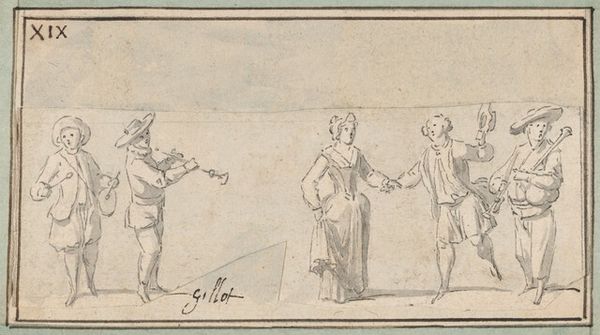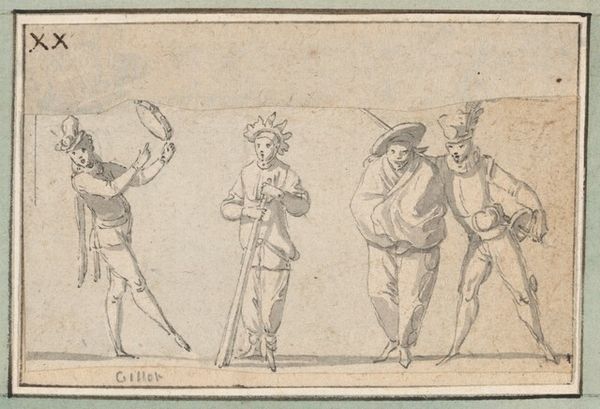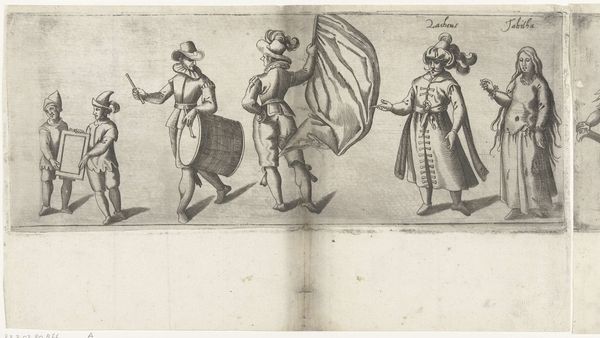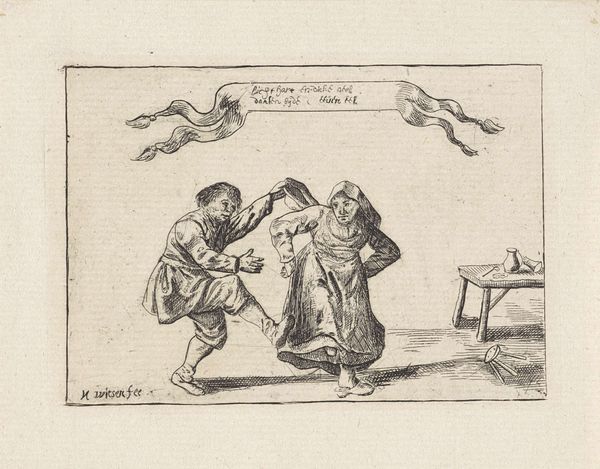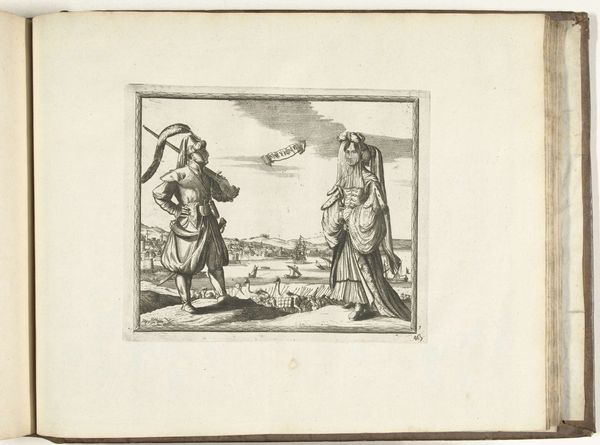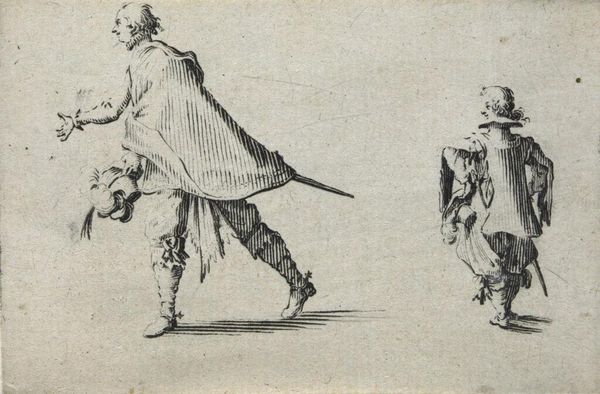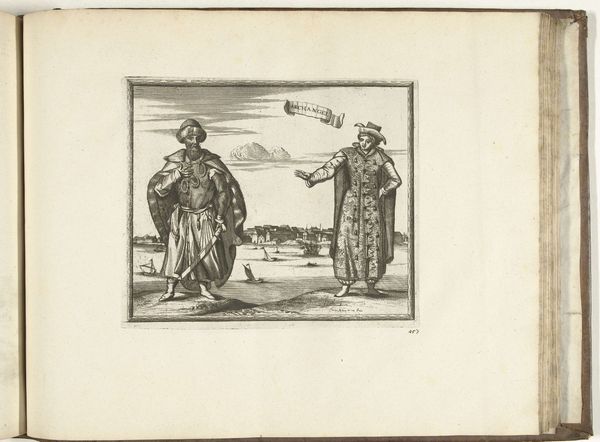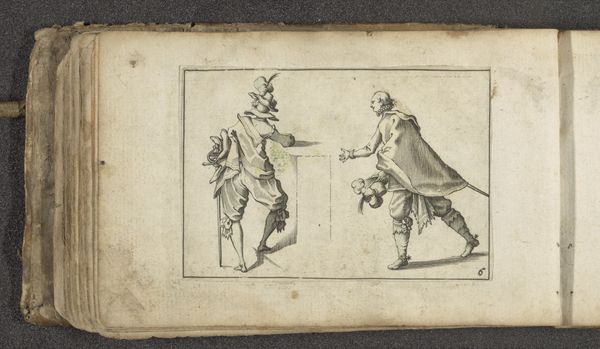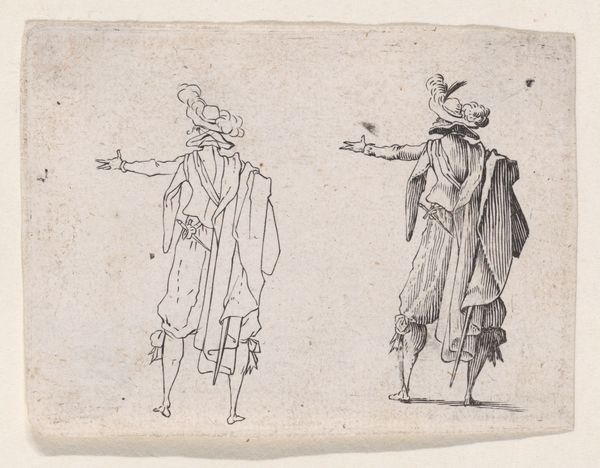
Four Commedia dell'Arte Figures: Harlequin "en femme," Mezzetin(?), Scaramouche, and Harlequin c. early 18th century
0:00
0:00
drawing, ink, pen
#
drawing
#
baroque
#
figuration
#
ink
#
pen
#
genre-painting
#
history-painting
Dimensions: sheet: 6.3 × 11 cm (2 1/2 × 4 5/16 in.)
Copyright: National Gallery of Art: CC0 1.0
Claude Gillot sketched these four Commedia dell'Arte figures using pen and gray wash on paper in the early 18th century. We see archetypes of the Italian theatre: Harlequin, here ‘en femme,’ and Scaramouche, each embodying distinct aspects of human nature. Consider Harlequin’s costume, which is a patchwork of diamond shapes. These shapes have roots in ancient, pagan rituals, serving as potent symbols of transformation and masked identity. The Harlequin figure can be traced back to earlier 'wild man' figures in folk traditions. His enduring appeal lies in his ability to subvert social norms, challenge authority, and embody the chaotic energy present in the collective consciousness. The recurring motif of masking reminds us that we assume different roles and personas according to social context. Masking taps into the deep well of human experience and highlights the interplay between reality and illusion. These dramatic figures engage us on a deeply personal level. Harlequin’s enduring presence in art mirrors society’s ongoing fascination with exploring the boundaries between order and chaos.
Comments
No comments
Be the first to comment and join the conversation on the ultimate creative platform.
